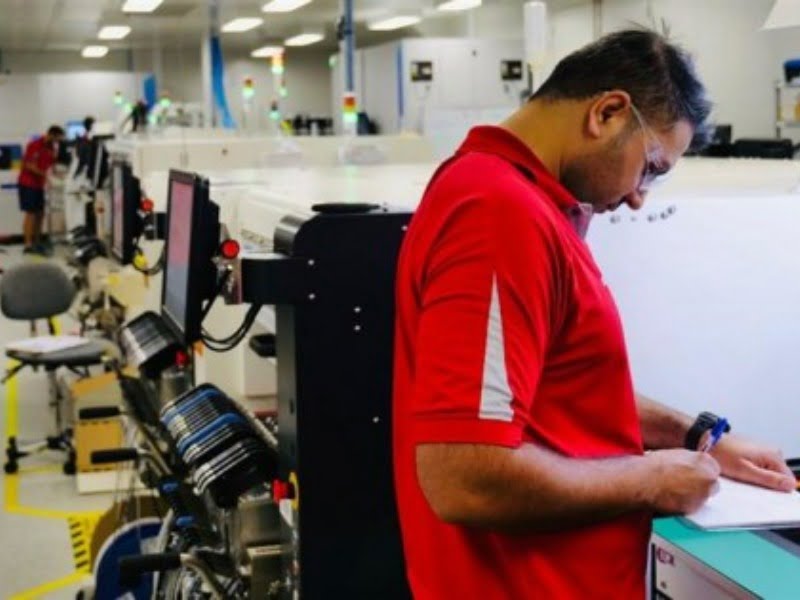The southern Adelaide industrial suburb of Lonsdale has been going through hard times recently with the closure first of Mitsubishi then Holden and a nearby oil refinery leading to numerous company closures and restructuring among others.
But one company, Redarc Electronics, has grown at more than 20 per cent a year for the past 16 years, doubling the size of its factory that makes off road vehicle electronics, electrical and solar power systems, brake controllers and vehicle management systems in 2011, and doubling again in 2018.
Now owner Anthony Kittle is planning to construct a building on an adjacent 3,000 square metre site to house his Redarc Defence Systems offshoot.
Mr Kittle said: “If you think about it that’s a lot of growth but in terms of systematic, planned, manageable growth that’s a pretty good rate.

“We invest 15 per cent of our revenue on R&D and to maintain that investment we have got to maintain the 20 per cent to make it a viable proposition.
“I am not trying to downplay it you have to plan for it and you are thinking five years or more out.”
When Mr Kittle took over the business in 1997 it employed just eight people, and today has grown to 298 including more than 90 employed in the past year alone.
With R&D performed by Redarc Technologies, a group of 130 engineers, Mr Kittle is now building a 24 hour engineering capability with small but growing capabilities in the United Kingdom and the US complementing work in Adelaide and Newcastle, NSW.
“If someone in Adelaide closes their computer in Adelaide in the evening when they come back at 8.00am that project has been worked on through the night. We want to create a 24/7 engineering capability.”
Mr Kittle has always had a very clear roadmap of the product and manufacturing technology he needs to acquire and develop to sustain his growth.
“Technology for us is a real enabler of the things we need to do to remain competitive as a manufacturer in Australia. We know we can’t be a low-cost manufacturer and survive in Australia.
“We have to compete on having the best technology and the best products in the marketplace.”
The strategy is paying off in the United States market where Redarc has found a high degree of knowledge and acceptance among consumers of his rugged off-road electronics products.
Consumers in the US search out products internationally that suit their demanding off-road conditions, and as Redarc’s products were designed for Australian conditions they suit the US also.
A key to this success was an exercise the company undertook in 2015 with the German Fraunhofer Institutes involving an industry 4.0 audit of his factory and the development of a technology development plan.
Mr Kittle said: “As far as we know this was the first Industry 4.0 audit in Australia that benchmarked us against the best SMEs in Europe.
“The outcome was a focus on digital technologies, smart facilities, connected machines and connected products.
“It was not just about the information we collect in the factory and the field but also about developing new value streams for the business.”
Redarc in January repeated the exercise with the Advanced Manufacturing Growth Centre and Swinburne University, developing a clearer idea of technology gaps to be filled and a detailed roadmap covering the next five years.
The last five years saw massive progress, with standalone IT systems in areas such as finance and manufacturing ERP integrated into a single end-to-end data management system in a $1.5 million 2018 software implementation.
From his desk Kittle can now get real time visibility into the performance of individual process and machines using a dashboard that all in the company share.
“In the past it wasn’t until month-end that you got that sort of information, and now we have real-time information helping us understand things like why is the uptime of a machine not what we expect.”
“In the old days you had to ask the CFO to prepare a report.”
Each printed circuit board going through the company’s surface mount facility, for example, is marked and laser tracked, giving full traceability down to the component level.
Digital technologies are complemented by the latest machines including a SMT Asscon reflow oven with vacuum soldering capability – the only such machine in the southern hemisphere.
The company has also used technology to shrink the time taken from product concept to production and release by building new products on the base of known, standard technology modules.
Product lifecycle management software allows the company to manage a product from its inception through the engineering, design, and manufacture, as well as the service and disposal of manufactured products.
“There are eight areas in our business where we know there are technology gaps we are working on.
“You might say it sounds bad but we know where they are what we have to do about them.”
It is the combination of product design and manufacturing discipline that enables Redarc to make the promise that its products will get an off-roader ‘there and back’.
Such ruggedness and reliability has also eased the way for the company to enter the defence field.
Two of its products are utilised onboard the Thales Hawkei armoured vehicle range for example.
Kittle said: “Touch wood, we have never had a failure of one of our defence products.”
Pictures: Redarc Electronics
This story was originally published by @AuManufacturing. You can subscribe to the @AuManufacturing newsletter here.
Do you know more? Contact James Riley via Email.
